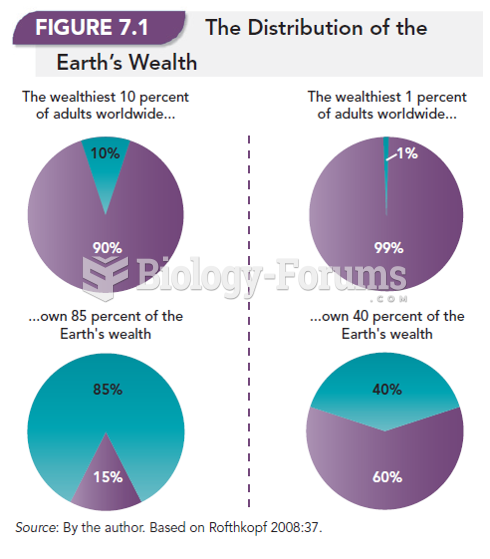Answer to Question 1
The distribution of wealth and income is highly unequal in the society. Like most countries, the United States is characterized by social stratification; that is, it has social classes, with the upper classes having by far the greatest access to the pleasures that money can buy.
In the United States, the top 1 of all households have over one-third of all personal wealth. The distribution of income is even more unequal: the wealthiest 20 of households in the United States receive over 50 of all income, whereas the poorest 20 receive less than 5 of all income.
Given the enormous wealth of the richest 20, it is clear that a simple redistribution of some of the wealth from the top one-fifth to the lowest one-fifth could easily wipe out poverty. Of course, that is not politically acceptable to members of the top fifth, who have the greatest control of the government. It should also be noted that many of these rich families avoid paying income taxes by taking advantage of tax loopholes and tax shelters.
Answer to Question 2
Throughout most countries in the world, wealth is concentrated in the hands of a few individuals and families. Poverty and wealth are closely related in that abundance for a few is often created through deprivation of others. There are two ways of measuring the extent of economic inequality. Income refers to the amount of money a person makes in a given year. Wealth refers to a person's total assets-real estate holdings, cash, stocks, bonds, and so forth.
The distribution of wealth and income is highly unequal in the society. Like most countries, the United States is characterized by social stratification; that is, it has social classes, with the upper classes having by far the greatest access to the pleasures that money can buy. In the United States, the top 1 of all households have over one-third of all personal wealth. The distribution of income is even more unequal: the wealthiest 20 of households in the United States receive over 50 of all income, whereas the poorest 20 receive less than 5 of all income. An estimated 50 million Americans are hungry, due to lack of financial resources, for at least some period of time each month. Millions of those who go hungry in the United States are children.
 Hong Kong is a strange situation. A British colony since 1842, it was handed back to China in 1997 a
Hong Kong is a strange situation. A British colony since 1842, it was handed back to China in 1997 a
 A mere one-half percent of Americans owns over a quarter of the entire nation’s wealth. Very few ...
A mere one-half percent of Americans owns over a quarter of the entire nation’s wealth. Very few ...




